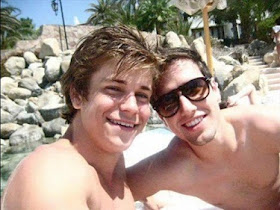When I was little, I loved Runner for the King (Rowena Bennett 1944), about a boy named Roca who is part of a relay of runners in the Inca Empire of South America. They deliver messages to and from the king in the form of knotted cords, or quipu.
But as Roca tries to deliver the latest message, things go wrong. A relay station is abandoned, a rope bridge is cut; he must go through the jungle, where he is attacked by a jaguar. He rescues his friend Cachi from the savages who are planning an attack, and they run together to deliver the message personally to the Inca.
Cachi and Roca's perilous run entered my dreams. My friend Bill and I were racing across a vast sandy desert beneath a midnight sky. In the distance I saw a city of sharp jagged towers, brightly lit with green lights. We ran for countless hours, for all our lives, never tiring, never stopping to rest. The landscape never changed, the sun never rose, the city grew no closer. Yet we were content.
Sometimes as we ran, I glanced over, caught Bill's eye, and he smiled. It was the same smile that Chekhov and Sulu shared in their room on the Enterprise, and Rich and Sean at the inn in rural Ireland. It was the most important sight in the world

Later I read Temple of the Sun (Evelyn Sibley Lampman, 1964), about a 12-year old boy named Chimal, whose quiet life with his best friend in the ancient Aztec capital of Tenochtitlan is disrupted by the arrival of Cortez and his conquistadores.
And I saw Royal Hunt of the Sun (1969), with the Conquistador Pizarro (Robert Shaw) capturing the extraordinarily muscular, semi-nude Atahualpa of the Incas (Christopher Plummer) and holding him for ransom. But the plan becomes complicated as he develops feelings of respect, affection, and finally love for the god-king.
All I knew about Latin America at the time was Pre-Conquest, about vast empires rising from the jungles, Aztecs, Incas, and Mayas, who wore loincloths and built step-pyramids and worshipped the Feathered Serpent and validated same-sex love.
In the fifth grade, we had a choice of Spanish or French. I took Spanish, and soon learned about Maximilian, Bolivar, Juarez, Santa Ana, and Zapata. I soon read Los de Abajo, Don Segundo Sombra, the Ficciones of Jorge Luis Borges. I watched Santo, El Blue Demonio, La Gran Aventura, Papa soltero. I dated Hispanic men. Eventually I learned about gay Latin American writers, like Arenas and Puig.
And I ran. Track in high school, cross-country in college, 5-Ks, 10-Ks, fun runs. I've been running ever since.




























